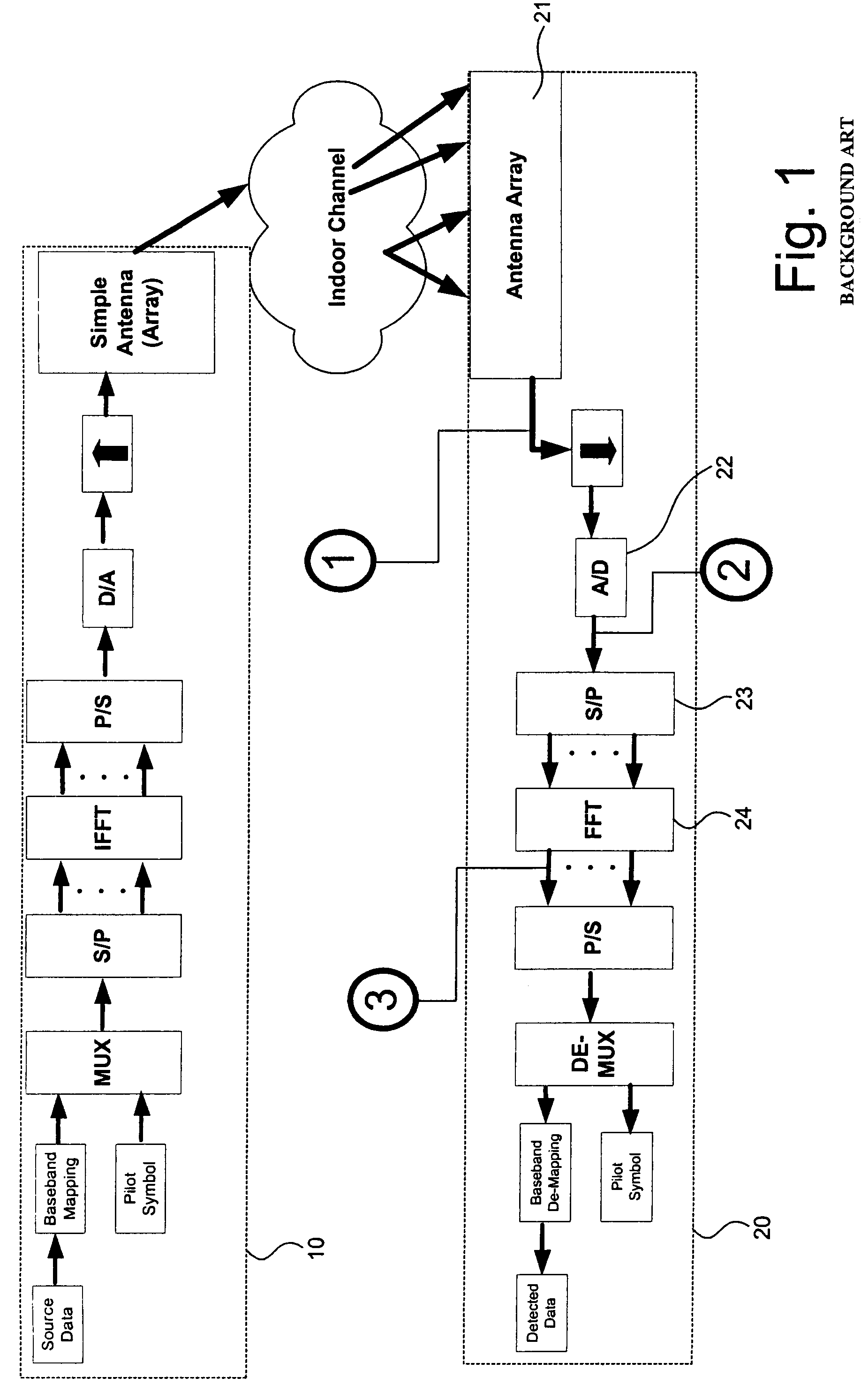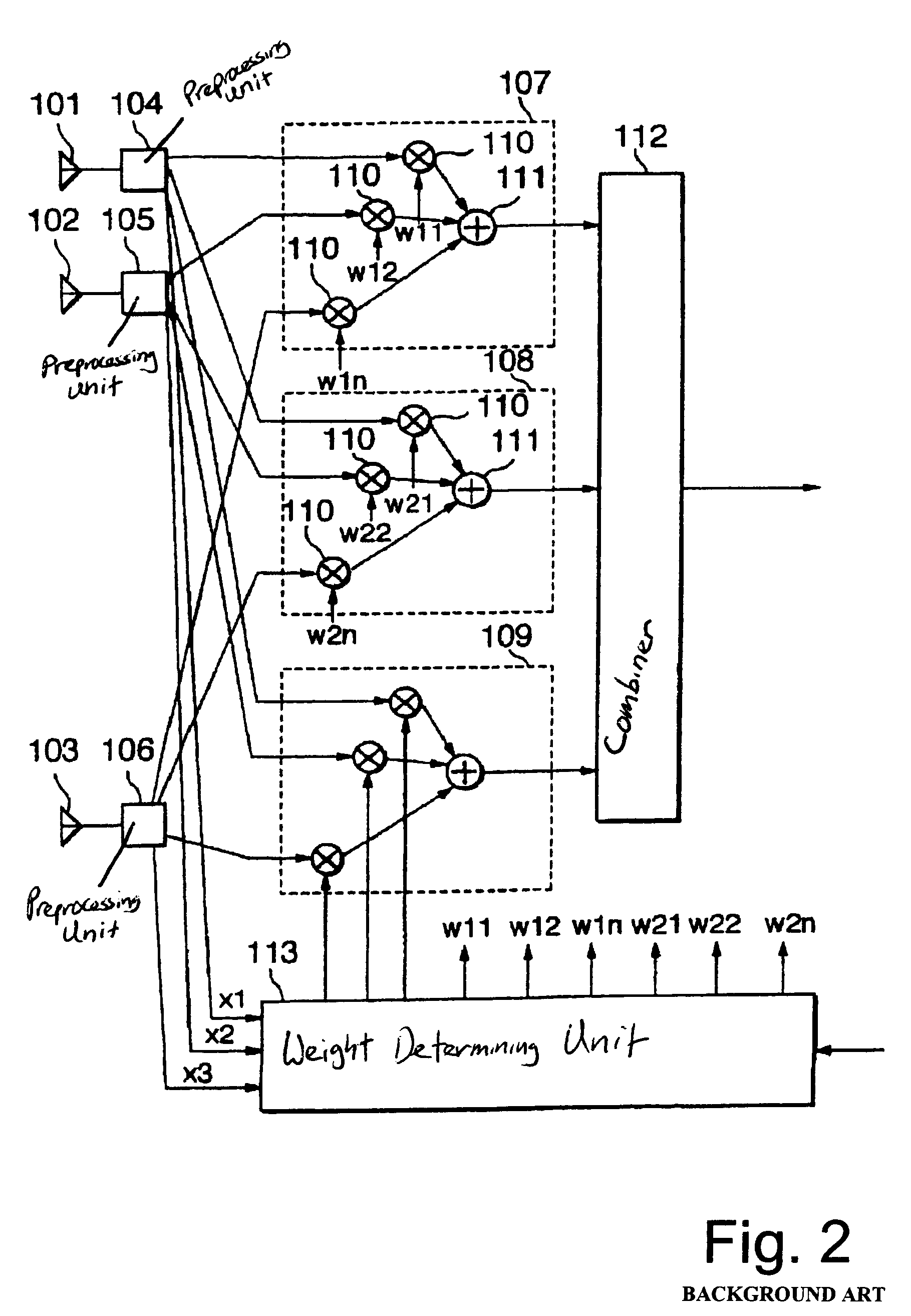Adaptive communication
a multi-carrier or orthogonal frequency division multiplexing and adaptive communication technology, applied in the field of adaptive communication, can solve the problems of complex receivers, high data rate wireless channels, and extremely difficult to extract and retrieve original information from transmitted signals reliably and without extremely complex processing, so as to achieve effective coherent demodulation, improve accuracy, and improve the effect of estimation
- Summary
- Abstract
- Description
- Claims
- Application Information
AI Technical Summary
Benefits of technology
Problems solved by technology
Method used
Image
Examples
Embodiment Construction
[0044]FIG. 5 shows the functional layout of the baseband section of an OFDM receiver used in the present invention. Many of the functions of the receiver shown are well known and so only a brief explanation is given here. The received signal is quadrature (I and Q) downconverted, amplified and filtered (not shown) before being (over-)sampled by the A / D unit. The digital over-sampled signal is then filtered and decimated. The over-sampling of the signal at the start aids the digital filtering process, after which it is then rate reduced to the required / expected sample rate. It is assumed in this case that the system provides for a preamble of some sort in every burst within a frame (MAC frame). In the case of HIPERLAN, each frame comprises a preamble portion that is made up of three basic OFDM symbols denoted here as A, B and C. A and B (or even C) symbols can be observed (recovered) in the time domain (pre-FFT) and used to establish the frame and frequency synchronisation (as well a...
PUM
 Login to View More
Login to View More Abstract
Description
Claims
Application Information
 Login to View More
Login to View More - R&D
- Intellectual Property
- Life Sciences
- Materials
- Tech Scout
- Unparalleled Data Quality
- Higher Quality Content
- 60% Fewer Hallucinations
Browse by: Latest US Patents, China's latest patents, Technical Efficacy Thesaurus, Application Domain, Technology Topic, Popular Technical Reports.
© 2025 PatSnap. All rights reserved.Legal|Privacy policy|Modern Slavery Act Transparency Statement|Sitemap|About US| Contact US: help@patsnap.com



